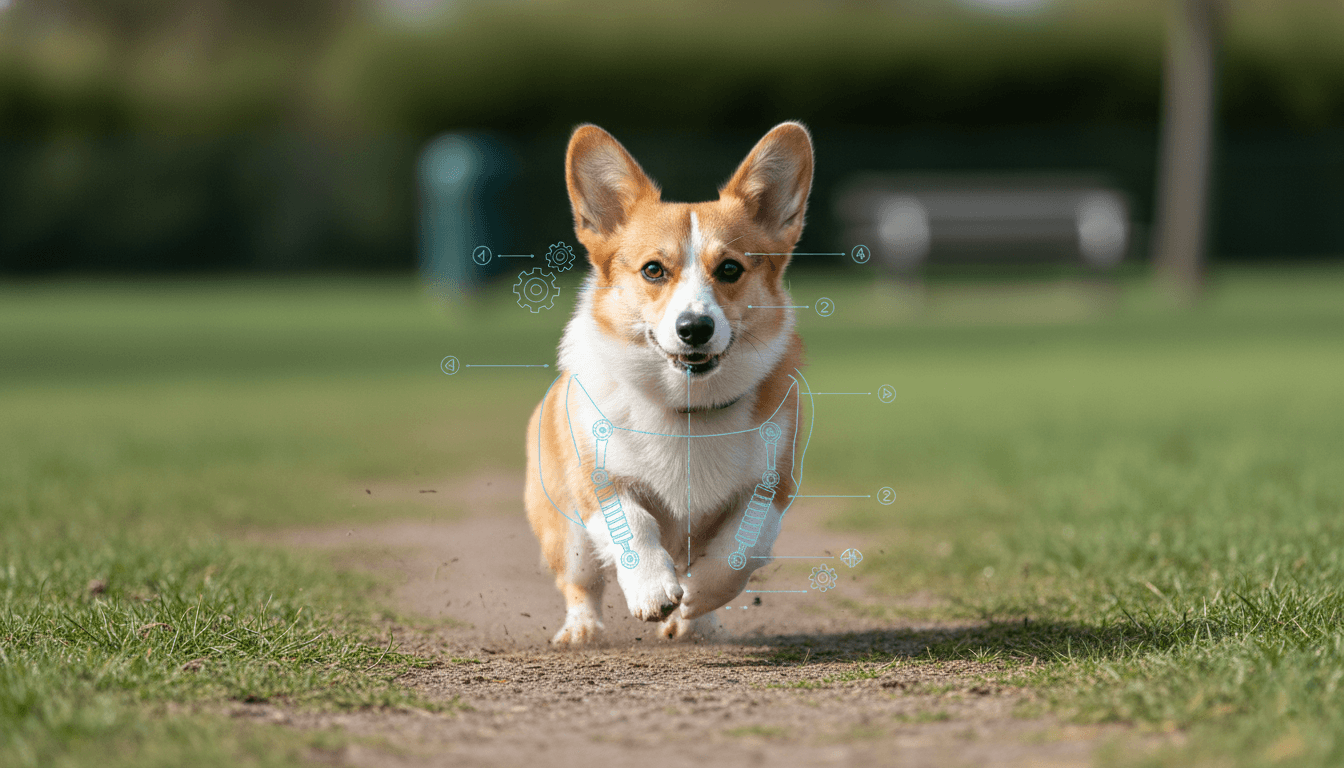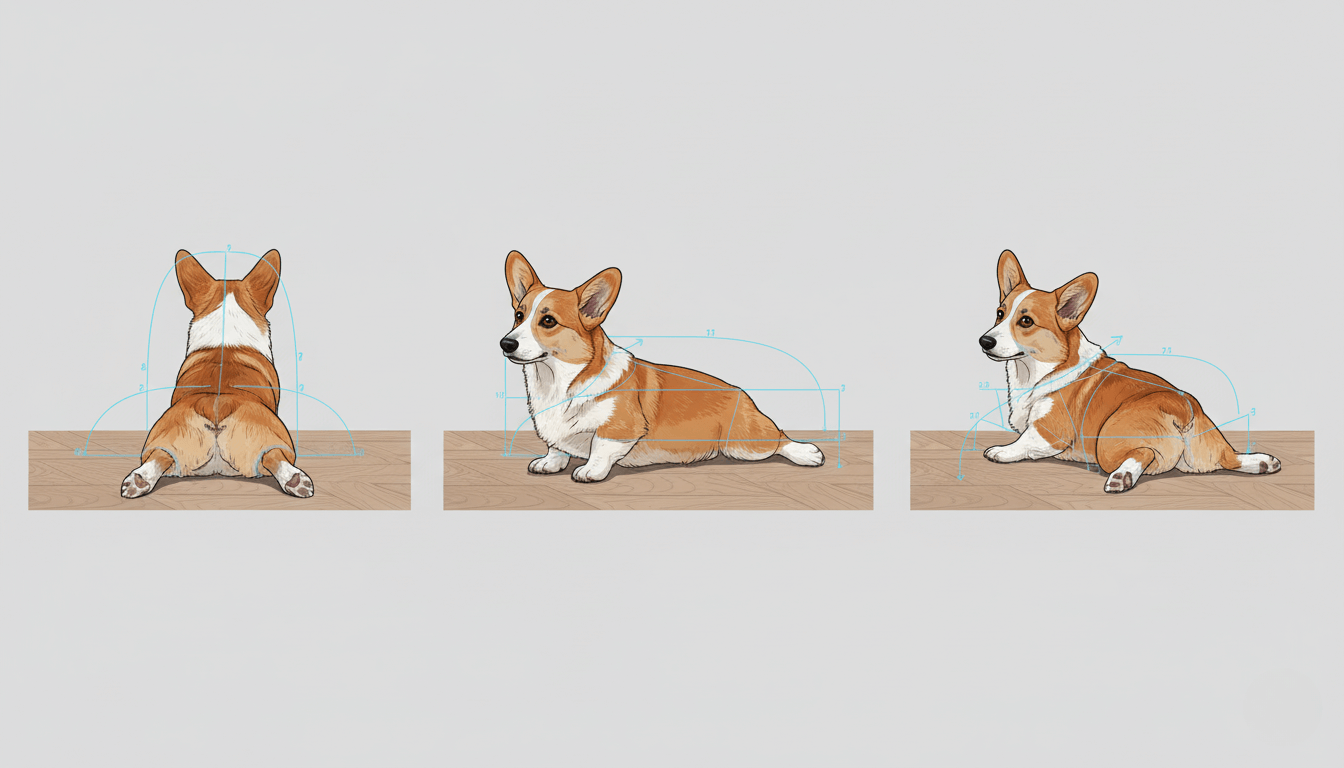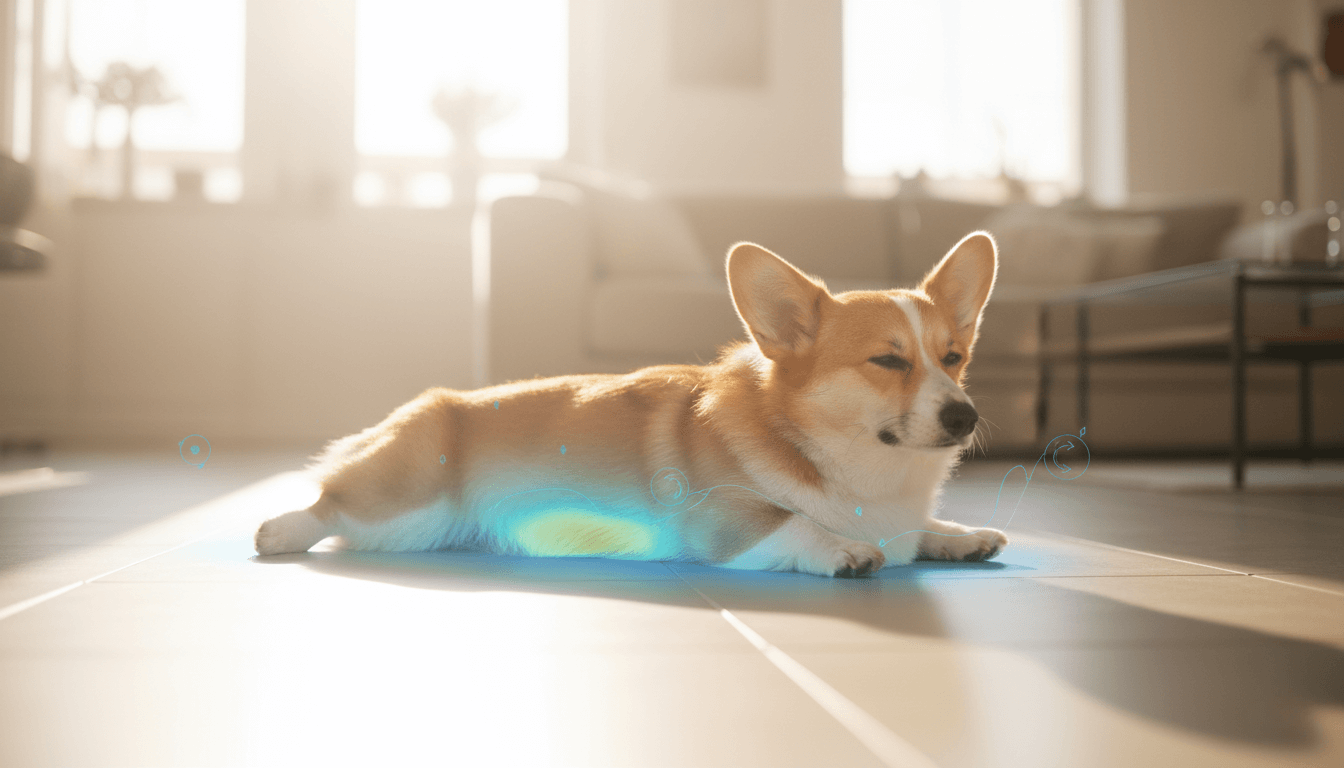
The Biomechanics of the "Sploot": A Study in Canine Structural Engineering
Published: 2025-10-08
The Biomechanics of the “Sploot”: A Study in Canine Structural Engineering
A Seriously Unserious Investigation
For generations, humanity has gazed upon the Pembroke Welsh Corgi and asked the big questions: How can something so low to the ground be so arrogant? What is the airspeed velocity of an unladen Corgi (when a cheese wrapper is opened)? And, most importantly, what in the name of physics is happening when they perform their signature maneuver—the “sploot”?
For too long, this phenomenon has been dismissed as “cute.” But we, the intrepid researchers at the Institute of Farcical Canine Studies, refuse to accept such a simplistic explanation. The sploot, a prone posture of such majestic sprawl that it has “taken the internet by storm,” is not a mere stretch. It is a masterclass in structural engineering, a thermodynamic miracle, and a blatant display of anatomical superiority. This paper will finally give the sploot the overwrought, pseudo-scientific analysis it so richly deserves. Prepare for science. And fluff.
Chapter 1: The Corgi Chassis: A Low-Rider Built for Business

To understand the sploot, one must first understand the splooter. The Corgi is not a dog in the traditional sense. It is a masterpiece of biological design, a furry, four-legged suspension bridge with an attitude problem.
1.1 The Low Center of Gravity: Nature’s Un-Tippable Marvel
The Corgi’s most celebrated design feature is its comically short legs. This is the result of a genetic trait called hypochondroplasia, a form of dwarfism. While lesser minds might call this a “mutation,” we recognize it as a deliberate and brilliant engineering choice. This design gives the Corgi an exceptionally low center of gravity, the point where an object’s mass is concentrated.
What does this mean in practical terms? It means you cannot tip one over. We’ve tried. (For science, of course.) This incredible stability was originally perfected for their work as cattle herders, allowing them to nip at bovine heels and duck under retaliatory kicks with smug impunity. They are, in essence, tactical, ankle-level operatives.
1.2 The Long-Span Fuselage: A Study in Load Management
The official Corgi blueprint calls for a body that is “moderately long and low,” roughly 40% longer than it is tall. This creates a long-span structure supported by four short, powerful columns. This system is constantly managing two types of structural loads:
- Dead Loads: The permanent, static weight of the structure itself. This includes their dense, potato-shaped torso, a double coat of formidable thickness, and the immeasurable weight of their own self-importance.
- Live Loads: The temporary, often chaotic forces applied to the chassis. This can include the impact of a toddler mistaking the Corgi for a fuzzy ottoman, the compressive force of being wrestled into a festive holiday sweater, or the sudden, crushing realization that the sound they heard was not, in fact, the refrigerator opening.
The sploot is the Corgi’s genius solution to load management. By executing this maneuver, the Corgi bypasses its vertical support columns entirely and distributes its entire dead load directly onto the floor. This is the structural engineering equivalent of unbuttoning your pants after a large meal—a necessary act of pressure relief that brings the system back into a state of perfect, blissful equilibrium.
Chapter 2: A Kinematic Taxonomy of Sploot Configurations

Through rigorous observation of internet memes, we have determined that the sploot is not a single posture, but a suite of highly specialized maneuvers. These are known colloquially by such technical terms as “frogging,” “pancaking,” or the deployment of “drumsticks”.
- The Full Sploot (aka “The Double Drumstick”): This is the quintessential sploot, the gold standard. Both hind limbs are extended directly backward, achieving maximum chassis-to-floor contact. This configuration is primarily used for deep relaxation and advanced-level cooling. It communicates a state of utter contentment and a complete disregard for being a tripping hazard.
- The Half Sploot (aka “The Lazy Leg”): A more casual, everyday sploot. One leg is extended while the other remains tucked, maintaining a state of partial readiness. This posture says, “I am relaxing, but I am prepared to launch myself across the room at a moment’s notice should a snack-related opportunity arise.” It is the business-casual of sploots.
- The Side Sploot (aka “The Clam Shell”): A transitional maneuver where one or both legs are splayed out to the side. This is often a precursor to a full roll-over, a tactical move designed to solicit belly rubs. By exposing their vulnerable undercarriage, the Corgi is weaponizing its cuteness—a bold and often devastatingly effective strategy.
Chapter 3: The Thermodynamics of Maximum Belly Contact

Why sploot on a cool tile floor on a hot day? A simple creature might do it to cool down. A Corgi, however, is performing a complex thermal transfer rooted in the laws of physics.
The Corgi is equipped with a luxurious, all-weather double coat, a piece of hardware designed for the damp, chilly fields of Wales. In a modern, climate-controlled home, this magnificent coat turns the Corgi into a self-propelled furnace. According to the Third Law of Thermodynamics, all processes suffer from heat loss and inefficiency. For a Corgi, this inefficiency manifests as a constant, low-grade internal combustion that must be managed.
The sploot is their elegant solution. By maximizing the surface area of their thinly-furred belly against a cooler surface, the Corgi transforms into a highly efficient, passive heat sink. Heat energy flows from the warmer Corgi to the cooler floor, a perfect demonstration of conduction. It’s not just lying down; it’s applied physics.
Chapter 4: Peer-Reviewed Memes: Empirical Data from the Digital Realm

Theory is nothing without evidence. For this, we turn to the most reliable and rigorously vetted source of scientific data available: the internet. Corgi memes are not mere jokes; they are observational case studies.
- Case Study 4.1: The Loaf Formation and Newtonian Inertia.
Observation: Corgis are frequently documented in a “loaf” configuration, limbs tucked, resembling a well-baked potato.
Analysis: This is a perfect illustration of Newton’s First Law of Motion: An object at rest stays at rest. The Corgi Loaf is a state of maximum inertia, a furry singularity of stillness. It will remain in this state until acted upon by a sufficient external force—typically, the sound waves generated by a crinkling bag of chips. - Case Study 4.2: The “Fluffy Butt” and its Aerodynamic Properties.
Observation: A significant portion of Corgi-related digital media is dedicated to the celebration of their posterior, often accompanied by the directive, “Look at my fluffy butt… Look at it!”.
Analysis: This is not mere vanity. The rounded, symmetrical form of the Corgi’s hindquarters suggests a design optimized for minimum drag during terrestrial locomotion. While its primary function is clearly to generate a powerful gravitational field of human affection, its aerodynamic efficiency cannot be discounted. - Case Study 4.3: The Cheese-Wrapper Catalyst.
Observation: The meme “Did someone say cheese?” documents the Corgi’s ability to transition from a state of complete inertia to supersonic speed in milliseconds.
Analysis: This demonstrates Newton’s Second Law (F=ma). The force (F) of a potential cheese snack, when applied to the mass (m) of the Corgi, produces an acceleration (a) that seemingly defies the known laws of physics. This suggests that cheese may, in fact, be a new fundamental force of nature.
Conclusion: A Unified Theory of Sploot

The sploot is not just a pose. It is a statement. It is a multi-tool of comfort, a feat of engineering, a thermodynamic masterstroke, and a declaration of a life lived with unapologetic flair. The Corgi, through this simple yet profound action, demonstrates an intuitive grasp of physics that would make Newton weep. It is the ultimate solution to the unique structural challenges of being a long, low, and impossibly charming creature.
Further research is urgently needed to quantify the precise relationship between sploot angle and the probability of receiving a treat, as this appears to be the dominant force governing the Corgi universe. Until then, we can only stand back and admire the furry, four-legged genius in our midst.
Follow Our Corgi Adventures!
Pinterest
Instagram
TikTok
YouTube